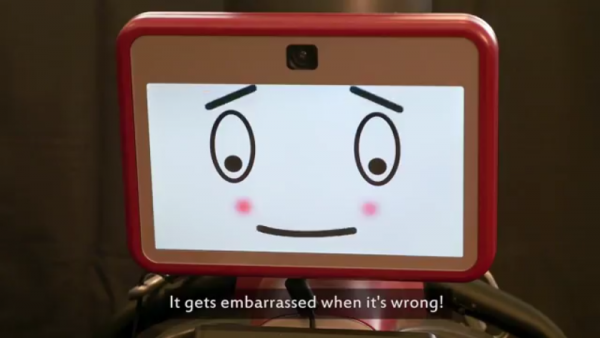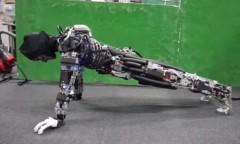By KM Diaz, | March 08, 2017

Researchers have developed a humanoid robot named Baxter. It is not operated by any electronic or voice command, rather, it is controlled by the mind.
Researchers have developed a humanoid robot named Baxter. It is not operated by any electronic or voice command, rather, it is controlled by the mind.
The researchers from MIT's Computer Science and Artificial Intelligence Laboratory and Boston University designed the humanoid robot, Baxter. It works using a feedback system by wearing an electroencephalography (EEG) cap. It will record the brain activity to relate the motion of the robot in real time and responding to negative feedbacks to correct its mistakes and actions.
Like Us on Facebook
Ph.D. student at Boston University and involved in the developing of the humanoid robot, Andres F. Salazar-Gomez, noted that they are in the right direction in programming the robot to be the natural extension of humans. To be specific, the operator can correct the mistake of the humanoid robot in real time even though they do not change the way they think.
The MIT CSAIL researchers designed Baxter to sort objects listed in two categories; wire and paint can. It will follow the human's brain instruction; if the operator noticed that the humanoid robot made a mistake the signal from the brain will be delivered to the robot to correct its mistakes.
To make the actions of the robot more natural, they focused on the so-called error-related potentials (ErrPs). It occurs naturally in the brain especially when human notices mistakes.
As of now, the system of the humanoid robot can only handle binary choices like sorting the objects. But researchers believe that the study also gives them hope to develop more thought-control technology in the future that could apply to a wide range robotics which includes communication tools, prosthetic limbs, and self-driving cars.
-
Use of Coronavirus Pandemic Drones Raises Privacy Concerns: Drones Spread Fear, Local Officials Say

-
Coronavirus Hampers The Delivery Of Lockheed Martin F-35 Stealth Fighters For 2020

-
Instagram Speeds Up Plans to Add Account Memorialization Feature Due to COVID-19 Deaths

-
NASA: Perseverance Plans to Bring 'Mars Rock' to Earth in 2031

-
600 Dead And 3,000 In The Hospital as Iranians Believed Drinking High-Concentrations of Alcohol Can Cure The Coronavirus

-
600 Dead And 3,000 In The Hospital as Iranians Believed Drinking High-Concentrations of Alcohol Can Cure The Coronavirus

-
COVID-19: Doctors, Nurses Use Virtual Reality to Learn New Skills in Treating Coronavirus Patients










